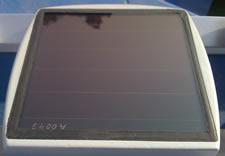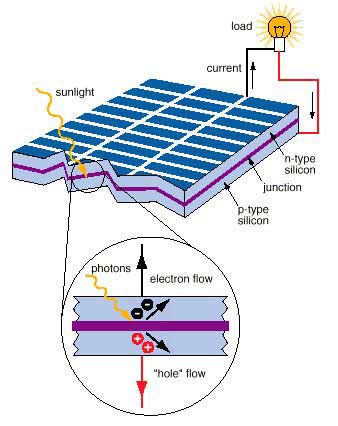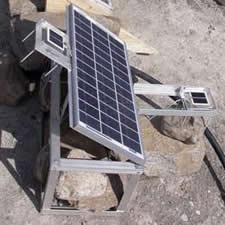Related Pages
LightSolar Photo Voltaic
» Solar Home System
» Cluster System
» 2-Axis Tracking System
Pico-Hydro
Wind Energy
General Poll - Light
| Solar Photo Voltaic |
 |
 |
 |
What is the Solar Photovoltaic Effect?It was in 1839 when the French man, Edmund Becquerel, for the first time observed that certain materials, when exposed to sun light, produced a small electric current. This is known as the photovoltaic effect, and is the basis of the operation of solar photovoltaic (PV) cells and modules. Download the
What is a Solar Cells?Solar cells are manufactured from semiconductors, that is, materials which acts increasingly as insulators at very low temperatures (from -200°C and below), but as conductors when energy or heat is available. Today, most solar PV cells are silicon based, specifically engineered semiconductors (the electrical properties of semiconductors can be controlled by the addition of defined impurities in the manufacturing process), since this is the most mature technology. However, other materials are under active research and gain increasingly more market shares. Individual solar PV cells are arranged and serially connected into larger PV modules or panels, which in turn are combined with other, equal PV modules, in larger solar PV systems, so called solar PV arrays.
How does a Solar PV Cell works?The solar PV cell operation is based on the ability of specifically engineered semiconductors to convert the absorbed energy from sunlight (the so called photons which can be considered like individual energy packets hitting the top surface of the solar PV cell) directly into DC (direct current) electricity by exploiting the photovoltaic effect. In the conversion process, the incident energy of the sun’s light creates electrically charged, free electrons in the solar cell, which are then separated by the engineered semiconductor’s (solar cell’s) internal structure to produce electrical current which is collected to an external electrical load (Site1 Site 2).
Figure 4: Solar Cell Working Diagram Rural Electrification in HumlaNepal is poor in fossil fuel resources, but blessed with major renewable energy resources, such as water, wind and sunshine. Thus, e.g. the average received daily solar radiation on a flat surface various in the Nepal between 4.5–5.5 kWh/m2 (see Figure 5), with peaks of up to 6.0 kWh/m2 in high altitudes, dependent on the location and season. Also, on an average Nepal enjoys 300 days of sunshine in a year. Thus the solar PV technology can supply reliable, relatively cost-effective electricity for basic needs in remote households and villages. Thus, since the mid-90s, the implementation of solar PV systems for rural electrification in Nepal as well as in other developing countries has significantly increased.
In order to understand and numerically define the available local solar energy, various tools such as solar energy maps, on a local as well as on a global scale are these days available, as the following Global Solar Energy Map shows.  Figure 5: The Solar Energy Map shows the average received global solar energy for various countries around the world (NASA 2008). Since 2002 RIDS-Nepal has started to develop, design and install various solar PV system concepts and types in Humla, in Nepal’s far north-western region. Most of the village based solar PV systems designed and installed by RIDS-Nepal produce power for elementary indoor lighting with WLED (white light emitting diode) lamps in the villages. Some solar PV systems though are designed and installed to provide the RIDS-Nepal staff with the needed electrical power to run laptops and PCs, a printer and lighting systems, to do their daily work the field such as planning, reporting and providing the various trainings for the village communities.
Thus, in Humla, till the end of December 2009 there has been 9, mostly village based solar PV system projects in different villages implemented through RIDS-Nepal. These are in: Chauganphaya High School (1 central tracking system), Chauganphaya village (6 cluster systems), Syada Health Post (1 central tracking AC system), Simikot RIDS-Nepal office (1 central tracking AC system), Dhadhaphaya village (18 clusters systems), Tulin village (1 central tracking system), Pamlatum village (4 cluster systems) Dharapori village (50 Solar Home Systems) and Lamakholsi (35 Solar Home Systems). All of these systems are periodically followed-up, and 5 systems have data monitoring and recording systems installed in order to learn how the various systems perform within their context.
Photovoltaic SystemsAfter having investigated and understood the various local contexts of every Humla village in which a solar PV system was intended to be designed to provide the local community with the daily energy for basic indoor lighting, RIDS-Nepal designed, manufactured and installed 3 different types of the solar PV systems in Humla. They are as following:
|





